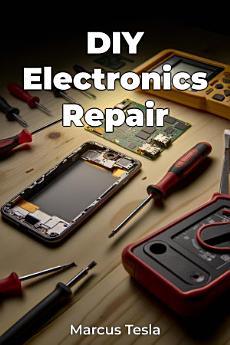DIY Electronics Repair
អំពីសៀវភៅអេឡិចត្រូនិកនេះ
The book stands out by balancing technical depth with accessibility, avoiding rote instructions to instead explain the “why” behind each step. Chapters progress from circuit diagrams and safety protocols to hands-on fixes like battery replacements or screen repairs, enriched with visual guides and real-world case studies. Unique insights—such as decoding lithium-ion battery chemistry or using 3D-printed parts to bypass proprietary barriers—equip readers to adapt solutions beyond the manual. It critiques manufacturer practices that hinder repairs while aligning with the global “Right to Repair” movement, merging activism with practicality.
Written in clear, mentor-like prose, the guide transforms novices into informed custodians of their devices. Its project-based approach, rooted in crafts and hobbies, bridges technical accuracy with everyday relevance. Whether reviving water-damaged phones or repurposing old gadgets, the book redefines electronics as tools for sustainability, proving that a soldered joint can be a small act of defiance against disposable culture.







